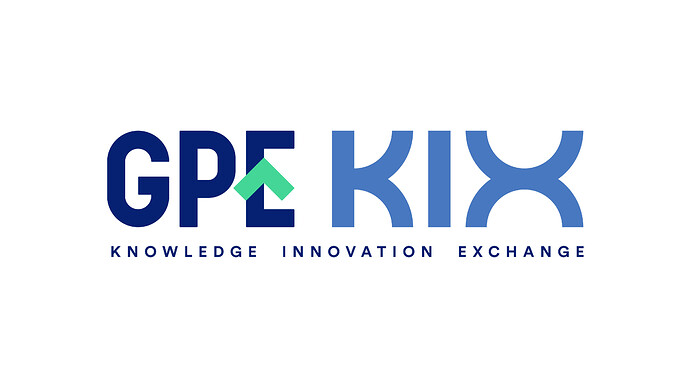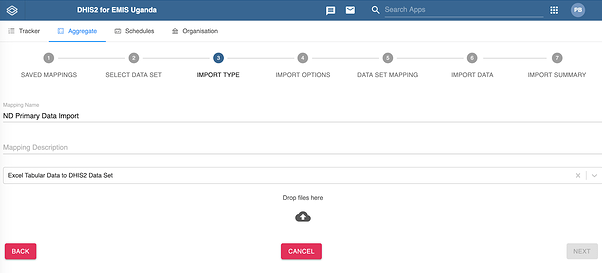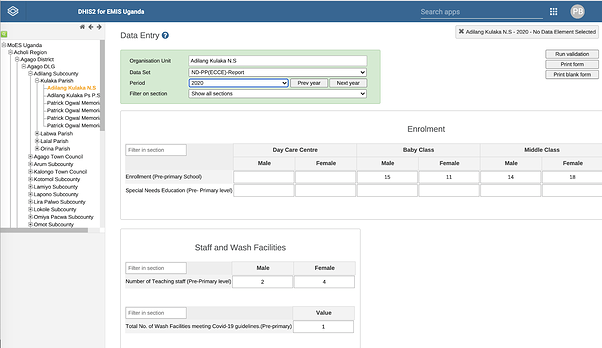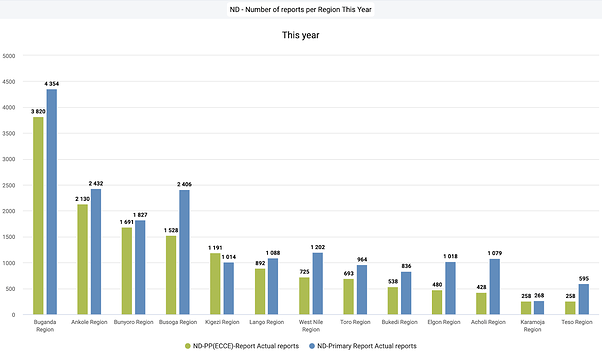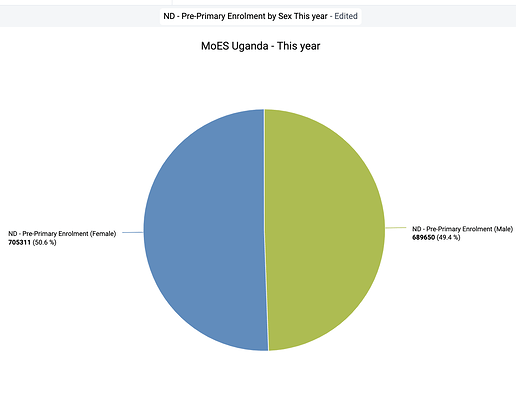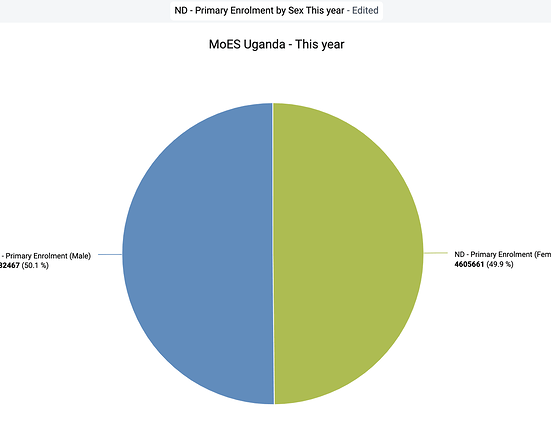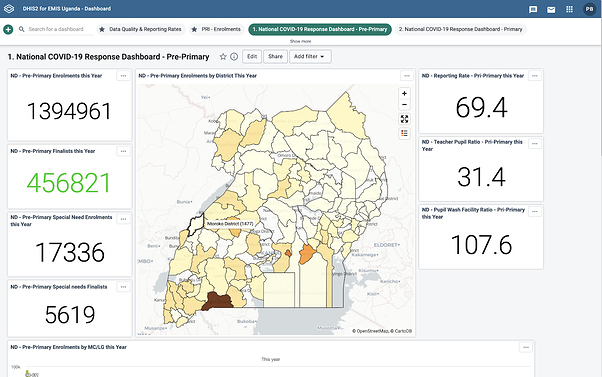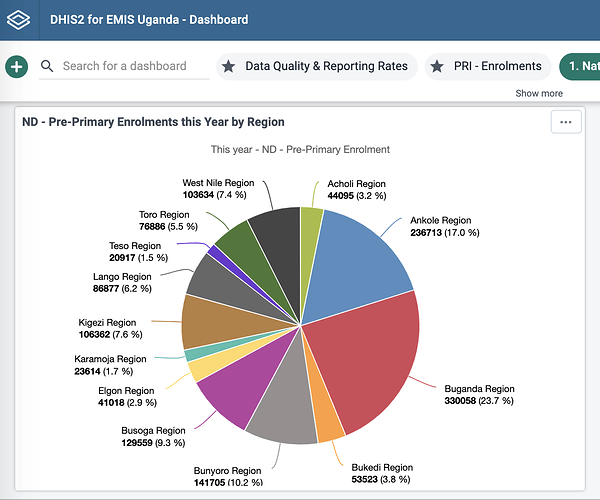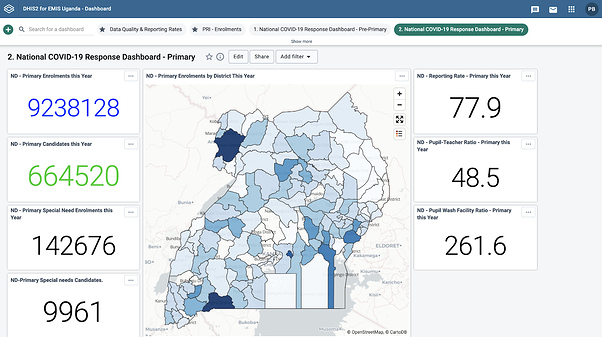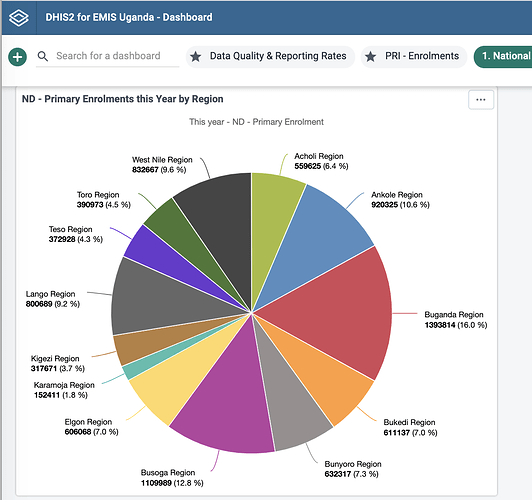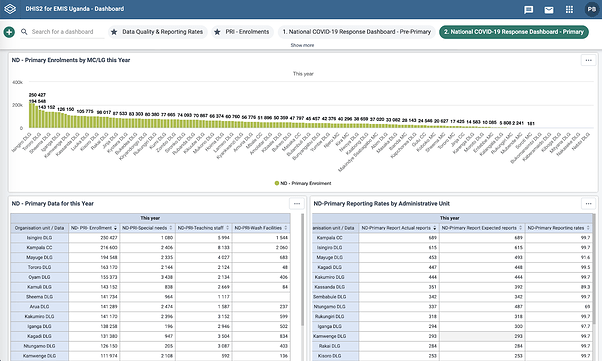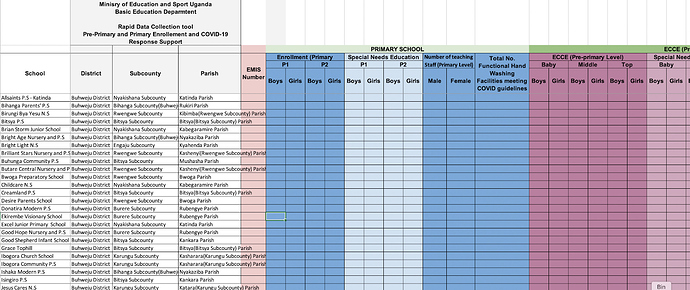NATIONAL DATA COLLECTION IN PRE-PRIMARY AND PRIMARY SCHOOLS
TO SUPPORT PLANNING FOR THE COVID-19 RESPONSE 2020
October 2020




Background
Uganda’s COVID-19 infections have continued to rise with a cumulative total of 11,557 infections and 101 deaths as of October 25th 2020. Although Uganda had not yet reported any Covid-19 death by March 2020, on Wednesday 18th March 2020, in an effort to limit gathering of learners and ensure social distancing, all education institutions were closed off, sending over 15 million learners back home. The closure of schools/learning centers for more than 5 months, negatively impacted learners with not only delays in completing the syllabus but also increased the likelihood of higher dropout rates due to higher cases of teenage pregnancy, child labor, domestic violence and aggravated poverty from the national lockdown.
In order to keep learners engaged during the lockdown, the government through the education sector, set up the Ministry of Education and Sports COVID-19 Task Force which initiated a rapid response and preparedness plan to mitigate the impact of the outbreak of COVID-19 on Uganda’s education system. The aim of the response plan was to; minimize the adverse effects of COVID 19 on learners, teachers and the education system at large, promote coordination and collaborations among education stakeholders and other agencies for a more effective response and also enhance the capacity of district local governments and stakeholders to promote protection of learners and teachers and ensure continuity of learning and transition to normal school program. The task force supported printing and distribution of learning materials to all districts, published weekly bulletins in the local newspapers and increased the number of televised, radio and online learning programs.
Whereas these strategies have had a positive impact on learners in the urban centres, televised, radio and online learning has not been accessible to learners in the rural areas due to; lack of radios, television sets, and internet, in low income homesteads as well as programs being aired while learners are engaged in domestic work. In addition, self-study materials distributed to learners through the local councils were inadequate due to limited up-to-date information on enrolment numbers from different schools in the country.
Rationale
Since June 2019, District Health Information System 2 (DHIS2) has been piloted as a Decentralised Education Management Information System (DEMIS) to monitor and manage education data in the two districts of Gulu and Mayuge. DHIS2-DEMIS provided a number of lessons in using DHIS2 for education and further strengthened the linkage between the health and education sector. In May 2020, the Minister of State for Primary Education, Hon Nansubuga Rosemary Seninde officiated the scale up of DHIS2 for DEMIS to two more districts of Wakiso and Ntungamo. The scale up is aimed at further improving information use in both new and existing pilot districts. In Gulu and Mayuge, data from the DHIS2 for DEMIS was used to guide printing and distribution of additional self-study materials while advocating for additional resources from partners to ensure learners have uninterrupted access to study materials during the national lock down.
The COVID-19 pandemic has demonstrated the vulnerability of national education systems to exogenous shocks, and highlighted the need for close collaboration and coordination between the public health and education sectors. The vulnerability of the education sector has been exacerbated by the lack of a robust and responsive national EMIS that can inform strategies for school reopening and help national and sub-national decision makers plan, organize and sustain provision of education services amidst a global pandemic.
Leveraging on the ongoing DHIS2 for DEMIS implementation in the four districts, the Ministry of Education and Sports through the Basic Education Department in partnership with HISP Uganda and Save the Children Uganda with funding from the Norwegian Agency for Development (NORAD) conducted a national data collection activity from both private and government aided- pre-primary and primary schools for the year 2020. This activity, conducted from September 15-30th, 2020 aimed to generate data to inform the planning for re-opening of schools for the final year students and distribution of resources like self-study materials, temperature guns, sanitizers, self-accelerated hand wash facilities, water tanks and masks within schools.
Objectives of the National Data Call
- To fast track the capture of vital data on enrolment, teacher information and availability of hand washing facilities from all primary and pre-primary schools across the country.
- Establish the number of functional pre-primary and primary schools and those that were closed before COVID 19 outbreak in 2020.
- Provide data to guide in the planning for school re-opening in light to Covid-19 and use the collected data to distribute self-study materials, non-medical face masks and procurement of radios and television sets to aid continuity of learning in the rural settings.
- Establish a master list for pre-primary and primary schools in the district local governments, Municipal councils and cities as of March 2020 across the country
- Create dashboards for pre-primary and primary schools with key indicators in the DHIS2 - DEMIS system for national and sub national data utilisation and visibility.
Methodology
Approval to conduct the national data collection exercise was granted by the Permanent Secretary - Ministry of Education and Sports and funding for the exercise was approved by NORAD through the University of Oslo. The MoES Basic Education department identified fourteen (14) team members from the basic education and planning departments, to support the activity (Appendix 1). The team leads were assigned to local governments and municipalities within specific regions and coordinated the district/municipal education officers (DEOs/MEOs) to collect data from the schools and ensure timely submission. The team leads were facilitated to travel and coordinate the data collection exercise within their respective regions, while the DEOs and MEOs were facilitated with airtime to coordinate with school administrators.
The Basic Education department provided the data to be collected and HISP Uganda supported the formatting to a user friendly data collection tool to facilitate the upload of data into DHIS2- DEMIS. Data collected included:- enrolment, special needs, teaching staff and wash facilities data for both primary and pre-primary as of March 2020 (Appendix 2). The templates were pre-populated with schools in each local government or municipality and shared via email with respective team leads at the MoES. The team leads shared the district specific templates with their respective DEOs/MEOs in their region of support. The data collection exercise at the districts and municipalities involved DEOs/MoEs liaising with all schools administrators in their respective area of jurisdiction to provide the data for completing the excel templates. The data collection exercise lasted for 2 weeks from September 15-30th 2020.
The HISP team customized pre-primary and primary data capture entry forms in the DHIS2 for DEMIS and imported the data on the submitted excel sheets into the system for analysis and presentation.
Fig 1. A DHIS2 Import Wizard App used to import data from multiple systems including excel files to DHIS2
Data was validated, analysed and displayed on the National Covid-19 dashboard using the inbuilt DHIS2 for DEMIS analytical apps and all data quality issues highlighted as demonstrated in the challenges.
Results and Discussions
Data collection, capture and Reporting Rates
Based on the list of administrative units obtained from the Basic education department prior to the activity, the data collection activity targeted a total of 177 decentralised administrative units including 135 district local governments, 34 Municipalities and 8 cities distributed in 13 regions across the country. Of the 177 expected reports 158 administrative units were able to submit complete dataset accounting for 88.8% representing 11,995 Pre-Primary schools and 19,987 Primary schools
Fig 2: Reporting rate as of October 25, 2020
The data import process started with importation of all the schools (pre-primary and primary) submitted in the templates into the DHIS2-DEMIS. The schools as updated by the DEOs/MEOs, were added to their respective Districts, City/Municipality/Local Government, Sub County and Parishes in the system. This provided an updated and improved schools master list.
Fig. 3 A data entry screen customised in DHIS2-EMIS for data entry or import
NOTE: Districts if provided with user accounts could also easily access the system online and directly enter the data as an alternative to submitting excel templates though this alternative was not explored due to the limited time.
Fig 4. Showing the number of reports per region for 2020
Fig 5: Pre-Primary Enrolment by Gender 2020
Fig 6: Primary Enrolment by Gender 2020
Overall gender ratio is almost 1:1 for both Pre-primary and Primary for the national enrolment data for 2020.
Learner Enrolment and special needs - Pre-Primary
Enrolment data was collected for Pre-Primary learners, as of March 2020, national enrolment in Pre-Primary learners (baby Class, Middle and Top) recorded at 1,394,961 learners, with 456,821 Pre-primary finalists in Top Class, 17,336 special needs pupils 5,619 of whom are finalists. The pupil- teacher ratio is 31:1 while the pupil to wash facility ratio stands at 107:1. The low reporting rate for Pre-primary is attributed to failure to obtain data from most private pre-primary schools that have been closed since March 2020.
Fig 7. Pre-Primary Dashboard. Source DHIS2 - EMIS https://emisuganda.org
Enrolment by region for Pre-primary learners indicates highest enrolment in Buganda region at 23.6% and lowest enrolment in Teso region at 1%.
Fig 8. Pre-Primary enrolment by region
Learner Enrolment and Special Needs - Primary
Enrolment and special needs data was also collected for primary learners from both government and private schools. As of March 2020, national enrolment for primary learners (Primary 1 to 7) were 9,238,128 learners, with 664,520 candidates in Primary Seven (7), 142,676 special needs pupils and 9,961 of whom are candidates. It is key to note that some districts had not yet submitted their data and these include
Fig 9. Primary School Dashboard. Source DHIS2 - EMIS https://emisuganda.org
Enrolment by region is balanced within the 13 regions with Buganda region having the highest enrolment at 16%, while Karamoja region has the lowest at 1.8% of the total Primary enrolment for 2020. The high enrolment in Buganda region correlates to the high population of children within the region.
Fig 10: Primary Enrolment by Region for 2020
Isingiro DLG reported the highest number of primary enrolments, 250,427 for the year 2020, while Bugiri had the lowest enrolment of 1,506 in primary school however, Kampala City had the highest reporting rates countrywide based on the number of schools.
Teacher and Hand-washing Facilities Data - Primary
Teachers and hand wash facilities data was also collected from the primary schools and the data indicates a pupil to teacher ratio of 48:1 with Kamwenge DLG with the highest ratio of 189:1. The pupil to Wash Facility ratio stands at 260:1 with Buyende DLG with the highest ratio of 109,638:1. This call for an urgent need for the school to be supplied with adequate wash facilities if they are to comply with COVID-19 guidelines. This is mainly due to the fact that all schools must have functional hand washing facilities with both water and soap prior to re-opening based on the Ministry of Health guidelines.
Fig 11: Primary Enrolment by district and Municipality for 2020Key Achievements
- Based on the collected data, dashboards with various indicators; Enrolment numbers, pupil to wash facility ratio, pupil teacher ratio and learners with special needs per district and at national level were created and information is available for use by all stakeholders since DHIS2 is an open source web based platform that can easily be accessed online.
- Cities, Municipalities and Local Government were able to successfully carry out the data collection. They compiled the data, entered it into excel templates and submitted electronically to MoES. By 26th October, 158 districts and municipalities had submitted their data with 88.8% submission rate.
- MoES has a national reference for pre-primary and primary statistics for 2020 that can be used for planning beyond COVID-19.
- The exercise has provided a tentatively updated pre-primary and primary schools master list with schools placed in their respective district local governments, municipalities and cities. Schools have been put in their respective parishes and sub counties which allows for assessment of availability of at least one government aided school in every parish as per the presidential directive and disaggregation of data by district local governments, municipalities and cities.
- Data was also captured from the newly established districts such as Rwampara, Kaazo, Karenga, Obongi, Madi Okolo, Kitagwenda and kalaki. These districts were able to submit their data separate from their mother districts. A total of seven new districts has since been added to the DHIS2-EMIS system
Challenges
- Data quality issues: These included incomplete or missing data… Some districts did not have data for special needs learners. Other districts captured data for primary schools and did not report for the pre-primary section This was attributed to failure to access the pre-primary schools which are privately owned institutions and most of them had been closed and school administrators out of reach. Failure of the DEOs/MEOs to conduct data verification and random checks at the respective schools due to the COVID-19 restrictions. They relied on data provided by the school administrators.
- The newly created districts and municipalities had to rely on their mother district template to identify their schools and submit the data. The MoES master facility list used to prepare the data collection templates excluded newly created districts as of 1st July 2020. . This led to the delays in data submission from the new districts/municipalities/cities.
- Multiple data calls/requests with short deadlines to the district and school education teams amidst other duties may have affected the level of dedication and time in collecting this data. During the same period, the DEOs were required to provide data on school assets, teacher accommodation, Special needs, staff recruitment, etc. All the requests could have been merged and harmonised to optimize resources.
- Delay in reporting by some of the districts. As of 25th October, 20 districts had not yet submitted their data.
Lessons Learnt
- The district education teams are capable of handling data collection and entry on their own. Given that most of the districts submitted data electronically, they should have the ability to use DHIS2 forDEMIS to capture, validate and analyze their data with training and short guides .
- The districts could use the DHIS2 for DEMIS as a repository for their data and schools lists instead of continuously relying on paper and excel sheets for data management.
- With limited funds, MoES can be able to collect reliable data in the shortest time possible. H. However, there is a need for data validation and verification like random spot checks in schools.
- The districts are continuously submitting data on different data requests to the central level and this limits their commitment to the data collection activities especially when there is limited feedback on data collected. There is a need to harmonise the data collection activities and tools and support the use of DHIS2 for DEMIS as a platform for data management and use. Data in DHIS2 for DEMIS is readily available and can be easily shared across different sectors such as health, finance, local government, gender etc promoting cross-sectoral linkages at district and central level.
Recommendations and Next Steps
- Standardise reporting tools: There are rising numbers of data needs from different departments and education stakeholders. There is a need to standardise data collection templates which can be customised in DHIS2 to support analysis and central repository of data like in the Ministry of Health. This will avoid duplication and reduce costs of data collection and management. The standardised tools can be regularly updated based on data needs.
- Harmonize and coordinate data calls/requests to districts and schools.DHIS2-EMIS has the potential to support these requests and further minimize on frequent requests to the schools/districts as data will be readily available for use in the DHIS2-EMIS.
- Provide timely feedback on the analysed data. This can be done through sharing of the dashboards with the respective DEO /MEO on the respective forum and encouraging discussion and comparisons between different districts for evidence based decisions.
- Leverage on use of the DHIS2-EMIS to support COVID-19 surveillance in schools. In addition to routine HMIS reporting, DHIS2 is being used in the health sector, as an electronic disease surveillance system for capture and analysis of Covid -19 data at the entry points and facilities. This module can be utilised to support disease/COVID- 19 surveillance in schools for both aggregate and individual data.
- To further support linkage between the education and health sector. An SMS based system or use of android devices for reporting on individual level data can be deployed to allow daily or weekly reporting of surveillance data. This can work as a rumor system in schools where they report on any suspected COVID-19 cases via an SMS platform (6767) at no additional cost. The rumor system is linked to the Ministry of Health disease surveillance system, which then prompts the health team to investigate and follow up on these logs.
- Provide printed posters/job aids to be displayed in schools to guide on how to report on any COVID-19 suspected cases within the electronic integrated disease surveillance and response system that is supported by DHIS2.
- Capacity building for MoES central level staff on use of DHIS2-EMIS analytic tools like pivot tables, charts and dashboards. This will help in promoting data use and utilisation of dashboards for evidence based planning and resource allocation.
- Engage various stakeholders and education development partners to support efforts towards the scale of DHIS2 for DEMIS as a platform to improve data management and use in the education sector
Acknowledgement
- MoES Permanent Secretary
- MoES Basic Education and Planning Teams
- District/Municipality/City Education Teams
- University of Oslo Team and NORAD
- HISP Uganda Team
- Save the Children Uganda Team
Data collection tool
